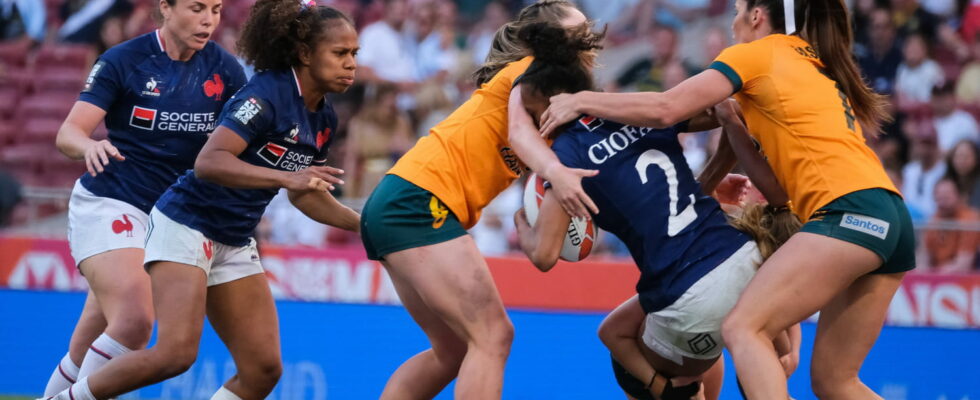While rugby 15 is the best-known form, its 7-a-side variant has some particularities which set it apart from its big brother.
Like its oval ball with capricious bounces, rugby has had a thwarted Olympic history. Introduced in 1900 by Baron Pierre de Coubertin himself, it was played with 15 players for 5 editions (1900, 1908, 1920, 1924 and 1936) before disappearing for 80 years. In 2016, the discipline returned to the program but in its 7-a-side variant. A practice considered more globalized and therefore more in the Olympic spirit, and spectacular. In addition to the number of players on the field, other differences should be noted with its more popular big brother.
A shorter format
The first point is the format of the matches. Unlike the XV where it lasts 80 minutes divided into two periods of 40 minutes, a 7-a-side match does not exceed 14 minutes. At the end of the first period of 7 minutes, the two teams benefit from a one-minute break before changing ends. The final is a little longer with two periods of 10 minutes to play. In the event of a tie, 5 additional minutes are added and the first team to score points wins.
Reduced scrums
Created to promote spectacle and praise speed, rugby 7s offers few set pieces. The scrums only involve three players (two pillars and a hooker, editor’s note), the only three forwards. The traditional second row and third row are absent. The back lines are also reduced from 7 to 4 elements with the scrum-half, the fly-half, a centre and a winger.
Dynamic replacements
Coaches can make as many changes as they wish, similar to basketball or handball, with substituted players allowed to return to the game without having to replace an injured player.
A transformation reviewed
If the goal, as at 15, is to go and flatten the ball in the in-goal area and score tries, the transformation differs at 7 since the scorer only has 40 seconds to execute the kick. This is done without a tee but by kicking the ball after bouncing it in front of you. Another subtlety is that it is the team that scored that then starts, when it is the opposite at 15.
A short exclusion
Due to the more compact match format, a cautioned player is sent off for 2 minutes, as in handball, while at 15 this suspension stretches over 10 minutes. So many subtleties that make rugby 7s, born in Scotland at the end of the 19th century, a unique discipline and a constant spectacle, where speed and intuition are the keys to success.
